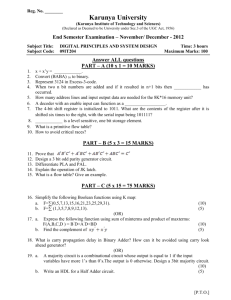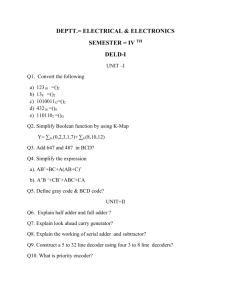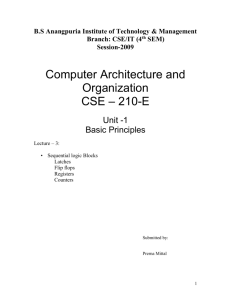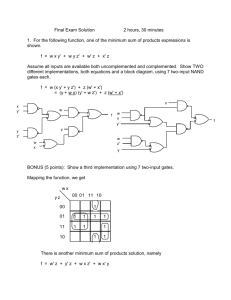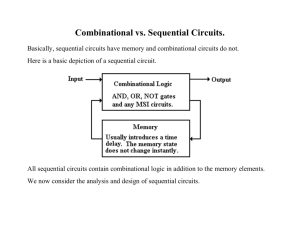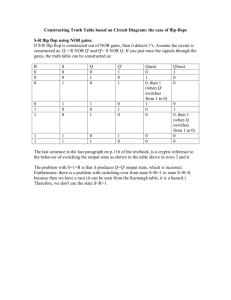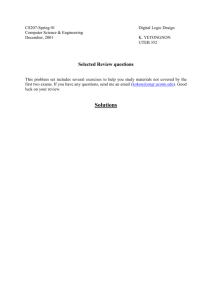Show how the JK flip flop can be modified into a D flip flop or T flip
advertisement
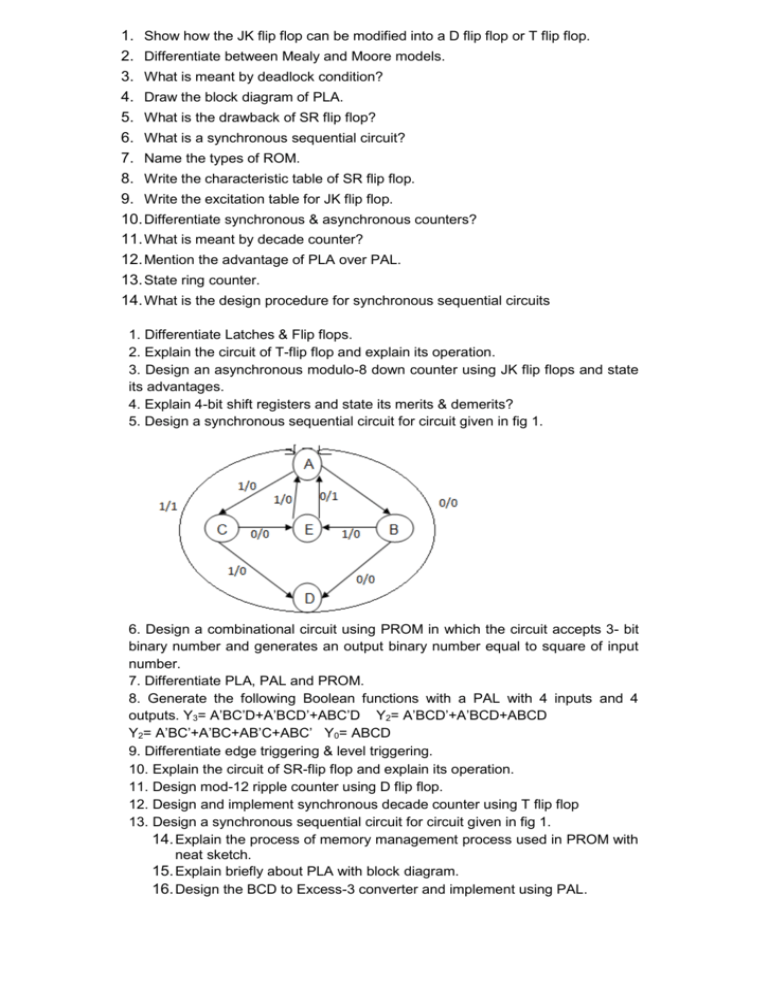
1. Show how the JK flip flop can be modified into a D flip flop or T flip flop. 2. Differentiate between Mealy and Moore models. 3. What is meant by deadlock condition? 4. Draw the block diagram of PLA. 5. What is the drawback of SR flip flop? 6. What is a synchronous sequential circuit? 7. Name the types of ROM. 8. Write the characteristic table of SR flip flop. 9. Write the excitation table for JK flip flop. 10. Differentiate synchronous & asynchronous counters? 11. What is meant by decade counter? 12. Mention the advantage of PLA over PAL. 13. State ring counter. 14. What is the design procedure for synchronous sequential circuits 1. Differentiate Latches & Flip flops. 2. Explain the circuit of T-flip flop and explain its operation. 3. Design an asynchronous modulo-8 down counter using JK flip flops and state its advantages. 4. Explain 4-bit shift registers and state its merits & demerits? 5. Design a synchronous sequential circuit for circuit given in fig 1. 6. Design a combinational circuit using PROM in which the circuit accepts 3- bit binary number and generates an output binary number equal to square of input number. 7. Differentiate PLA, PAL and PROM. 8. Generate the following Boolean functions with a PAL with 4 inputs and 4 outputs. Y3= A’BC’D+A’BCD’+ABC’D Y2= A’BCD’+A’BCD+ABCD Y2= A’BC’+A’BC+AB’C+ABC’ Y0= ABCD 9. Differentiate edge triggering & level triggering. 10. Explain the circuit of SR-flip flop and explain its operation. 11. Design mod-12 ripple counter using D flip flop. 12. Design and implement synchronous decade counter using T flip flop 13. Design a synchronous sequential circuit for circuit given in fig 1. 14. Explain the process of memory management process used in PROM with neat sketch. 15. Explain briefly about PLA with block diagram. 16. Design the BCD to Excess-3 converter and implement using PAL.
